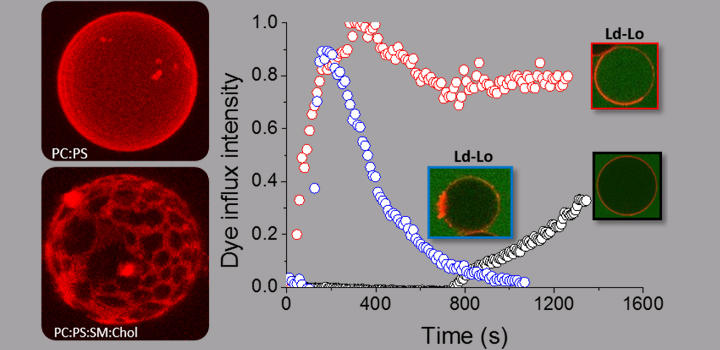Alvares DS et al, Biochim. Biophys. Acta, 2017
Polybia-MP1 (IDWKKLLDAAKQIL-NH 2) is a lytic peptide from the Brazilian wasp venom with known anti-cancer properties. Previous evidence indicates that phosphatidylserine (PS) lipids are relevant for the lytic activity of MP1. In agreement with this requirement, phosphatidylserine lipids are translocated to the outer leaflet of cells, and are available for MP1 binding, depending on the presence of liquid-ordered domains. Here, we investigated the effect of PS on MP1 activity when this lipid is reconstituted in membranes of giant or large liposomes with different lipid-phase states. By monitoring the membrane and soluble luminal content of giant unilamellar vesicles (GUVs), using fluorescence confocal microscopy, we were able to determine that MP1 has a pore-forming activity at the membrane level. Liquid-ordered domains, which were phase-separated within the membrane of GUVs, influenced the pore-forming activity of MP1. Experiments evaluating the membrane-binding and lytic activity of MP1 on large unilamellar vesicles (LUVs), with the same lipid composition as GUVs, demonstrated that there was synergy between liquid-ordered domains and PS, which enhanced both activities. Based on our findings, we propose that the physicochemical properties of cancer cell membranes, which possess a much higher concentration of PS than normal cells, renders them susceptible to MP1 binding and lytic pore formation. These results can be correlated with MP1’s potent and selective anti-cancer activity and pave the way for future research to develop cancer therapies that harness and exploit the properties of MP1.
Authors: Alvares DS, Ruggiero Neto J, Ambroggio EE.



